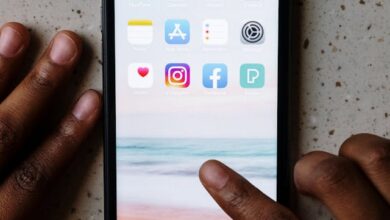How The Story, Birth of Jesus And The Bible Was Copied From Ancient Egypt Spirituality

The story of Jesus Christ is one person in mankind’s history that is notable. This is on the grounds that Christianity is one of the significant religions practiced on earth.
Furthermore, the Bible, which is the Christian heavenly book, is quite possibly of the most famous book on the planet.
The birth of Jesus Christ, growth in the Gospel, and Death are one that has been told in numerous ways, prearranged and acted in numerous motion pictures, and shown in different dialects of the world.
Also Read: 5 Things you Never Knew About Jesus
The story of Jesus Christ Copied From Ancient Egypt Spirituality
What most devotees of Christ and others all over the planet don’t have any idea, about is that there is a suitable record/story which demonstrates that the story of Jesus Christ was replicated by ancient Black people of Kemet(Egypt) – the love of the SUN.
Throughout our examination of the beginning of Jesus Christ, we staggered on old information that directs his story toward sources in antiquated Kemet (named Egypt by the Greeks), in homeland Africa.
An English-conceived American political activist and rationalist, who resided from 1737 to 1809, said this regarding Jesus Christ:
“The Christian religion is a spoof of the love of the sun, wherein they put a man called Christ in the spot of the sun, and they pay him the reverence initially paid to the sun.”
The people who have concentrated on obvious African and world history can highlight the way that the Bible was replicated from different methods of reasoning, stories, and lessons of Kemetic spirituality.
How conceivable is the Story of Jesus
The spirituality in Kemet then was known as Ma’at, which had 42 standards, with individuals were to use in carrying on with their regular day-to-day existences.
It would later be named the “42 Commandments of Ancient Egypt”, however in the genuine sense, they were the “42 Declarations of Purity” or “The 42 Negative Confessions” of Ma’at.
It was from these regulations and rules that the 10 Commandments were replicated and placed in the Bible and Torah.
Watch Video And Subcribe to Our Channel
The Story of Jesus Resemblance with Horus – A Clear Case Of Plagiarism
Horus was/is the sun God of Kemet (Egypt) or 3000 B.C. From the old hieroglyphics, antiquarians had the option to recount the account of Horus.
He was the SUN and light of the world, and he had an enemy, SETH, which was darkness.
Every morning Horus rose and won the battle over darkness, and at night, SET would win the light (SUN/Horus) and send him to the underworld.
Horus was brought into the world on December 25th. He was brought into the world of a virgin, called Isis.
introduction to the world was declared by a star in the east, which three rulers followed to go honor the infant SUN. By the age of 12, he was a prodigal child-teacher, and at 30 years old, he was baptized.
Horus had 12 disciples with whom he went around, healing the sick and performing miracles, like walking on water.
He was referred to by many names, for example, “The Truth, The Light, God’s blessed Son, Lamb of God”. In the wake of being sold out by one of his followers.
Horus was killed, covered, and following three 3 days, he resurrected.
These were also the very qualities attributed to the story of Jesus Christ
All of the many philosophies, literature, and stories in the Bible were all of Black origins, till the Romans conquered Egypt 30 B.C and the white-washing began.
Generally, it was the lessons of the ancient people of Kemet, and Pharaoh Akhenaton, that Christianity twisted the Bible.
The production of the Bible was designed by self-declared Roman Emperor, Flavius Valerius Constantine in the fourth 100 years, 312 A.D.
His excellent goals were to have a religion that would control the majority and put the Roman realm under his full political handle.
History recollects Constantine as the absolute first Christian Roman Emperor, despite the fact that he didn’t begin as a Christian.
His most memorable experience with what is today known as Christianity was the fight against Western Roman Emperor Maxentius at the Tiber River’s Multivan Bridge in 312 A.D.
In a report by one of the fourth century students of history, Bishop Eusebius of Caesarea, he accounted that Constantine admitted to seeing a flaming cross in the sky, with the words “In this sign thou shalt conquer.”
He went ahead to kill his enemy and started his campaign for Christianity.
After 13 years, in 325 A.D, Constantine and his followers began to assemble the book which the world knows as the Christian Bible today.
He coordinated a gathering called the “First Council of Nicaea”.
They utilized the old contents, writing, and methods of reasoning individuals of Kemet/Africa/Nubia/Alkabulan (Egypt), which the Romans attacked and plundered.
They likewise took the books of Moses and made it the primary books of their Bible.
Yet, they required a face and story that would attract love to their new religion, so the making of the individual of Jesus started, with the expulsion of Horus from the Kemet folklore, and supplanting him with Jesus Christ.
Also Read: How Africans Were Lured into the First Slave Ship’ Jesus of Lubeck
Bishop Of Caesarea As Jesus Christ
It was the Bishop Of Caesarea, Eusebius, who Emperor Constantine set accountable for compiling the Bible, with all the information and strict texts from Kemet/Africa/Nubia/Alkabulan (Egypt).
He was known as the “Father of Church History “, and was the person who gave the feature discourse at the gathering of Nicaea in 325 A.D.
Continuously 380 A.D., when the Bible had been assembled, and the Roman Empire announced Christianity to be the religion and law of its domain.
Anybody who wouldn’t adhere to the Christian regulation or contradicted the congregation would be beaten harshly or killed.
The next year, 381 A.D., Emperor Theodosius I, gathered the second chamber of the Christian church, known as the Council of Constantinople.
At this gathering, they proclaimed the Trinitarian convention, which enables the Holy Trinity and makes the Father, Son, and Holy Spirit, to be one.
There are accounts which express that it was the Romans, under the Christian Emperor Theodosius I, in 391 A.D., who ordered the destruction of all temples in Kemet (Egypt), including the Library of Alexandria.
They consumed every one of the parchments, texts, and a large part of the composed proof which focuses on Kemet (Africa) as the wellspring of their recently framed Christianity.
The freshly discovered religion and the Roman realm being its political base, gathered in each Ecumenical chamber in succession, in other to decide on what perspectives to add to their precepts and lessons.
For a time of 462 years, they held 7 Ecumenical Councils, where Pope and Bishops were accumulated to decide on what might go into the Bible and what wouldn’t.
Also Read: A Tale of the Moors, the Black Muslims of Northwest Africa Who Ruled Spain and Portugal
The Ecumenical Councils
These first Ecumenical committees were gathered to create the Bible.
They edited and added things provisions that would suit the European view on global control.
An illustration of this is the many refrains on bondage, and how slaves ought to comply with their lords and not revolt.
The following 14 Ecumenical Councils would happen from 869 A.D. to 1965 A.D.
These realities basically highlight the way that the Bible isn’t the immediate expression of God, and was not propelled by the Essence of God.
Since mortal men, throughout the span of 1640 years, were permitted to discuss, vote on, alter, compose, and make what ought to be and what ought not be in the Bible.
They ensured that accounts, legends, and books that didn’t line up with the plan of the Roman realm were excluded.
These books are known as the books of the Apocrypha (from the Old Testament).
The Apocrypha was made of 14 books, which were taken out from the 81 books of the Hebrew Scripture, in 1684.
Is most fascinating that the account of Jesus was added 300 years after the Bible was accumulated in 325 A.D.
Notwithstanding the narrative of Jesus, the Roman Catholic church made heaven and hell, to scare people into following their teachings of Christianity.
Scientists and history specialists have additionally contended that specific parts of the narrative of Jesus was perhaps replicated from other old fanciful stories, and afterward added to that of Horus.
These accounts are:
1) Horus/Heru (Kemet/Egypt) – Exusted a long time back, brought into the world of a virgin on December 25, there was three stars in the east.
He had 12 pupils, strolled on water, recuperated the wiped out, reestablished sight, was executed, dead for three days, and revived.
2) Mithra (Persian) – Existed quite a while back, was brought into the world of a virgin on December 25, star in the east reported his introduction to the world.
He had 12 followers, performed supernatural occurrences, was executed, dead for three days, and afterward revived.
3) Krishna (Hindu) – Existed quite a while back, brought into the world of a virgin, star in the east, performed supernatural occurrences, called the child of god.
He was also called the child of a craftsman, was killed, and revived from the demise.
4) Dionysus (Greek/Roman) – a long time back, brought into the world of a virgin on December 25, voyaging educator, transformed water into wine.
He was called the sacred youngster, executed, dead for three days, revived.
Also Read: Antonianism: The Catholic Church That Depicts Jesus Christ as a Black Man
History proves that between 3000 B.C and 500 B.C., there were 19 stories in which the saviours were crucified. All of these 19 came before that of Jesus Christ was written.
These stories and their characters were:
Horus of Egypt, 3000 B.C.
Thulis of Egypt, 1700 B.C.
Krishna of India, 1200 B.C.
Notice
Crite of Chaldea, 1200 B.C.
Atys of Phrygia, 1170 B.C.
Thammuz of Syria, 1160 B.C.
Hesus of the Celtic Druids, 834 B.C.
Notice
Bali of Orissa, 725 B.C.
Indra of Tibet, 725 B.C.
Iao of Nepaul, 622 B.C.
Hindoo Sakia, 600 B.C.
Commercial
Mithra of Persia, 600 B.C.
Alcestos of Euripides, 600 B.C.
Quexalcote of Mexico, 587 B.C.
Wittoba of the Telingonese, 552 B.C.
Commercial
Prometheus of Caucasus, 547 B.C.
Quirinus of Rome, 506 B.C.
Dionysus of Greece, 500 B.C.
Conclusion
Albeit these accounts could have substantial cases as the wellsprings of the replicated story of Jesus.
Antiquarians and scientists have tracked down more proof in the Horus story, and the African (Kemet) beginning from the Bible.





